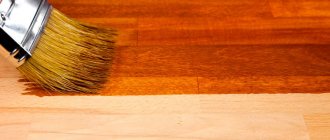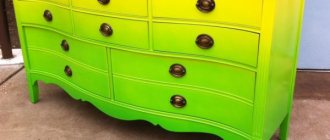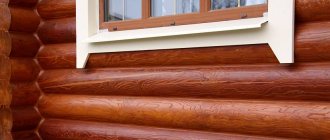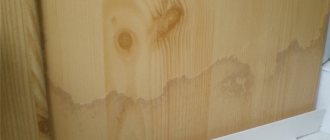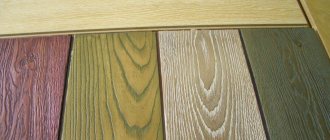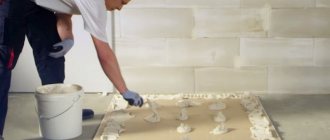How can you paint wooden doors?
The choice of a suitable paint coating mainly depends on the appearance of the door leaf you plan to get as a result, on your experience in such matters and, of course, on the conditions in which the painting will be done.
If you are going to treat a door behind the walls of a living space, then you need to choose a finish that is odorless so as not to harm the health of people around you. There are several types of enamels on the market that can be used to treat the door and its components:
- Acrylic. This paint perfectly hides any defects on the surface being painted. It also protects the material from dampness, moisture, and mold formation. It can also be used for glass. Today, many companies produce high-quality acrylic compositions that are environmentally friendly.
- Alkyd. This composition is very similar to traditional oil paint, but has more significant protective characteristics that can last up to 4 years.
- Polyurethane. This paint is highly durable and durable. It perfectly fills the pores of natural wood, thereby protecting it from the penetration of moisture and dirt.
- Water-dispersion and water-emulsion. These paints are quick-drying and do not contain substances harmful to health. In addition, they do not emit a strong odor and are durable.
- Powder and hammer. These options have appeared on the market relatively recently. They are not designed for wood finishing. As a rule, metal sheets are coated with them.
- Wax and oils. These specific coatings are often purchased for finishing wood. They allow the material to “breathe” and have a restoration effect on damaged surfaces. However, wax coatings are not quick-drying, so it will be possible to use the treated door only after 3-4 days.
For patination, which is fashionable these days, the following compositions are used:
- Acrylic paint available in a wide range of colors.
- Bituminous, giving a dark brown tint.
- Waxy patina, which can have both natural and green-blue tones.
- Shellac patina, available in colors from gold to red.
- Oil patina, which is used extremely rarely in modern interiors.
An important condition for quality painting is to prepare the surface well. The wood is treated with an antiseptic against fungi and sanded. Much attention is paid to the coating material: for example, varnish can advantageously present the beautiful texture of the canvas, and paint of a certain shade will help to fit perfectly into the interior design.
To do this, you need to have tools (heat gun, spatulas, sandpaper or grinder, brushes and rollers). The door is prepared for painting: to do this, it is removed and the layer of old coating is removed. The wood is sanded to perfection, and then covered with paint or varnish in several layers and allowed to dry.
When painting a door, consider the overall design of the room. Pay key attention to color. For example, light and pastel colors are in fashion now. Such a door is advantageous: it looks beautiful and visually expands the space.
Varnish (matte, glossy, colored) is suitable for this purpose. Keep in mind that the structure of the wood, including its defects, will be visible under the varnish layer. There are many types of impregnations, waxes and varnish-based oils. Before choosing paint for a door, consider its properties.
To begin, the door is removed from its hinges. Then it is disassembled, leaving the canvas itself. Old paint or varnish is carefully removed. The wood is covered with the first layer of varnish or paint and left until completely dry. After this, apply a second layer, which must also dry completely. The finished surface is polished.
It is best to remove old paint using an industrial hair dryer. You will also need a spatula and fine sandpaper. Warming up the old paint, pry it up with a spatula and remove it. The remaining particles on the wood are rubbed with sandpaper.
Painting metal doors is fundamentally different from painting wooden doors.
The metal surface is cleaned, wiped and dried. At the same time, rust and old coating are removed, and uneven surfaces are primed. Paint for metal doors can be alkyd, graphite, acrylic, hammer, epoxy. It is applied in several layers, after which it is allowed to dry completely.
The damaged area is sanded to prevent rust. Then the area is wiped with solvent. Next, the metal doors are painted with powder paint in several layers, and the first layer can be made with primer.
The first stage is surface preparation. It is cleaned of dirt and unevenness, and then puttied. Then the coating is matted with fine sandpaper and wiped with white spirit. The paint is coated in several layers and waited for it to dry completely.
There are special water-based paints for restoring dermantine and leatherette. As an option, you can use a primer with high adhesion, onto which any paint with a high content of plasticizers can be applied.
For plastic, water-dispersion and acrylic paints are used. The surface is wiped with a special cleaning liquid or hot water to remove dirt. Then the door is treated with fine sandpaper and wiped dry with a napkin. It is best to apply the paint with a spray gun, as it does not leave streaks.
The canvas is covered with a layer of stain. Excess of the latter is removed with a rag. The structure of the wood appears through the stain, which is very similar to natural wood. When the stain dries, the door is opened with varnish. In appearance, such a door is no different from the one made from solid wood.
Designers advise choosing bright, rich colors for the kitchen that give a good mood. Delicate pastel shades and traditional white are also suitable. Contrasting doors look good: the canvas is bright in color and the jambs are neutral, or vice versa.
A safe option is to paint the door moldings in a contrasting color. Geometric compositions made from different colors look original. Stencil patterns, vertical stripes, and circles typical of the pop art style look good. Acrylic, an odorless paint for interior doors, is well suited for this.
If you don’t know what paint to paint interior doors, choose white - it’s a win-win option. The door is pre-primed and dried. Start painting from the ends or recesses (if there are any). Apply a minimal amount of paint to the brush. The accumulated paint in the corners of the panels is removed with a sponge.
The painting technology is no different from painting a regular door, with the exception of the materials used - stain, patina, special waxes and colorless varnishes. An important condition when painting is that the wood texture should be clearly visible.
So, important conditions when painting a door are careful preparation of its surface and the choice of high-quality paints and varnishes. A bright palette, special aging effects, unusual design solutions - all this will turn the door leaf into a real work of art!
How to paint a wooden door
Today the question is “How to paint a wooden door in an apartment?” is not very relevant, because the market for paints and varnishes is quite diverse. But before you paint an interior wooden door in your house, you need to think about whether you need to preserve the structure of the natural material, or whether you need to completely mask the grain of the wood by painting the canvas with an opaque layer. Taking your own wishes as a basis, pay attention to the following paintwork materials:
- Enamels with an opaque base.
- Oil based paints.
- Transparent or tinted varnish.
- Oil based impregnations.
- Stain.
- Other paints and varnishes that can refresh the color of wood or give it a beautiful, correct shade.
We suggest you read: What paint is better to paint a wooden door
The table below shows the classification of coatings.
| Classification: | Varieties: | |||
| View: | Varnish. | Dye. | Impregnation. | |
| Chemical composition: | Organic base. | Water based. | ||
| Mode of application: | Internal. | Outdoor. | Combined. | |
| Protective effect: | From changes in temperature and moisture. | From mechanical damage. | From chemical and organic irritants. | |
Of course, how to paint an old wooden door is up to you, but it’s worth listening to the opinions of experienced craftsmen. Many finishers recommend:
- Water-based acrylic material (substances containing acrylic have the most optimal consistency, which is important when working with brushes, and also spread well over the surface);
- Alkyd material (has a good ability to repel moisture, is not afraid of the sun, frost and sudden changes in temperature, dries quickly).
A wooden door painted with acrylic paint.
If you need to treat the door to a bathhouse, it is better to use alkyd paint for outdoor work, which is less susceptible to adverse factors. Using such material, it will be possible to cover the doors to the house, as well as interior blocks.
If you are wondering “how to paint a wooden door in a country house or in an apartment?”, you should already understand that applying paint is not carried out in one stage. Sometimes, to get the desired effect, you have to use different formulations. Initially, specialists use impregnation, which can give a certain tone to the door, after which they apply a decorative layer.
Selection of paints and varnishes
Paintwork materials are classified according to the following criteria:
- By composition (water and organic based);
- By protective effect (against organic and chemical substances, mechanical influences, changes in humidity and temperature);
- By method of use (internal, external, combined);
- By type (impregnations, paints, stains, varnishes).
1. Paints. Can be used to process new and old doors.
There are no difficulties in choosing, but due to incompetence people choose the wrong material. Paint and varnish compositions can be transparent or opaque. The first compositions include certain pigments that exhibit the woody structure. But opaque coatings consisting of organic solvents (oil, alkyd and other types) are often used.
The most popular is alkyd enamel, the cost of which is affordable. This coating is highly durable and has a wide range of shades.
.
But the enamel smells bad, its unpleasant odor remains for 2 days, so they work with it outside, first removing the canvas from the hinges or vacating the room. An alternative solution is acrylic enamel, which also has many colors but does not have a toxic odor. Dried paint does not have much strength, so it is additionally treated with acrylic varnish to protect it from mechanical stress. Rice.
2. Wood paint A more durable coating for wood doors is nitro paint, which has optimal strength. The composition is toxic and sometimes leads to allergic reactions, so you need to wear protective equipment when working with it. If an old surface is treated with nitro paint, the panel is prepared and sanded in advance to a light shade.
2. Varnishes. They are traditional coatings that add shine to wood and protect its surface.
Typically, varnish is used to coat doors in rooms with high humidity (baths and saunas).
There are many different varnishes:
- Acrylic. The material is resistant to negative influences, humidity and ultraviolet radiation. There are matte and glossy finishes without a toxic odor.
- Nitrocellulose. Wooden doors can be treated with varnish. The coating is not suitable for treating bathrooms and saunas, as it has insufficient strength and cracks quickly.
- Water based varnish. It has no unpleasant odor. Due to different additives, the properties of the material may differ.
- Polyurethane. The varnish has high strength and adhesion to wood, and comes in matte, semi-gloss and glossy. In addition to wood, polyurethane varnishes can be applied to parquet, veneer, and countertops.
- Oil varnish. There is no pungent odor. The composition contains a lot of fatty resins, so the old coating is removed from the door in advance. It is better to apply with a brush due to the thick consistency.
- Polyester. The composition has a pungent odor, is highly durable, but is toxic, so it is suitable for treating street doors.
It is better to paint interior doors with acrylic or polyurethane coating, and resistant materials are suitable for external work or rooms with high humidity
.
Rice.
3. Wood varnish 3. Stains. The purpose of such compositions is to tint the wood and provide temporary protection from negative influences. But it requires constant updating of the layer that emphasizes the wood structure.
There are several options:
- With a varnish base (azure). The composition reduces the duration of work, but aesthetics are difficult to achieve, so a single-color surface can be obtained by spraying with a spray gun;
- With oils. Must be diluted with solvent before use;
- With water. It takes longer to dry, but there is no toxic odor. The composition penetrates deeply, giving a more saturated shade and a clear pattern that looks beautiful;
- Alcohol based. It dries quickly, but is more expensive and has a strong odor.
Fig.4.
Wood stain for a wooden door To protect the wood from fungus, moisture and dirt, oil wax is used, which penetrates deeply into the surface. The coating adds strength and shine
.
If you are choosing what to stain the surface of the door with, then you need to take into account the drying time and the resulting effect.
Sequence of work
The door structure is not only the door itself, so it is very important to carefully carry out the preparatory process. Of course, you can repaint only the canvas, but this way the jambs will fall out of the overall picture. And so, the process of painting the door should be carried out in the following sequence:
- The door structure is removed and placed on a stable surface (optionally, a pair of stools). If alkyd paint is used for work, it is better to move the work to the open air, because such paints and varnishes have a pungent odor.
Preparing a wooden door for painting
- Then, without removing the canvas itself, it is fixed with wedges so that the paneled brush has access to all hard-to-reach places. It is also necessary to block the doors so that during the drying process the doors do not slam shut and damage the new layer of paint.
Whatever route you take, you will still have to dismantle the fittings. If there are permanent parts, they can be hidden under paper or foil.
Giving new life to an old wooden door
Most often, the question of how to cover a wooden door arises among owners of old interior structures that the apartment received from the moment of construction.
Do not rush to throw away old wooden doors. They have a durable construction and can serve for many more years with the right approach.
Many years of paint layers begin to crack and crumble, and the façade design does not fit into the new modern interior. The time has come for a major restoration of the wooden panel and frame. The main requirement is to prepare the structure for a new decorative coating. After thorough cleaning, it is necessary to select the base coating so that you know what work needs to be done before covering the wooden door. For coating, you can choose paint, varnish or stain. The sequence of work will be the same. The only difference is the finishing layer and the drying time of the surface.
Painting an old wooden door
If you decide not to buy, but to cover the old door with paint, then the choice must be made between two types of paint:
- alkyd enamel;
- acrylic enamel.
The choice of paint dictates the sequence of further actions.
- Alkyd paint dries within two days and has a very strong odor, which does not bring comfort to either you or your family members. The only advantage is the fact that alkyd enamel is abrasion resistant, does not require varnish if a glossy composition is chosen, and is affordable.
If you or family members are prone to allergies, acrylic paint should be preferred for covering a wooden door.
When thinking about the question of how to cover a wooden door, do not forget to buy wood primer and putty.
Wood putty and primer will be needed to prepare the door for coating with paint or varnish.
These funds will be needed to prepare the canvas for subsequent painting.
Having examined the properties of two types of enamel, we will get acquainted in detail with all the stages of returning an old wooden door to a new life.
Preparing the door covering
Well, let's figure it out further, how to paint a door correctly? Preparatory work is carried out according to the following scheme:
- Remove all old coating, even primer and putty, until the wood itself remains. For this work, you can use a grinder, a hair dryer, or special cleaning compounds.
- Then you need to sand the surface, remove any defects, sand off small paint residues, and degrease. This work cannot be done without a sander, which is best connected to a vacuum cleaner. If you don’t have such a device, you can get by with medium-grain sandpaper.
Plastering a door
- When you have completely managed to sand the canvas and prime it, you can move on to puttying large flaws. If you plan to use varnish as a finishing coat, it is better to use a special composition for wood. If the decorative dye is not transparent, you don’t have to worry about the color of the putty. Don't forget about the gaps at the walls and baseboards!
- After puttying, after waiting the time specified by the manufacturer of the mixture, you need to sand again, masking the abrasions. You can immediately use a medium-grained cloth, and then finish with a fine-abrasive one.
If the doors under the old finishing materials have darkened, and you would like to simply open them with varnish, preserving the structure and pattern of the wood, problem areas can be lightened. To do this, you can prepare a simple bleach with your own hands: mix bleach with water in a ratio of 1:3. When the surface is completely processed, wiped with a rag and dried (so that the paint does not begin to swell), you can begin directly painting the door.
How is a typical door painted?
Painting a wooden door
We told you how to paint a wooden entrance door or an interior door, now it’s time to talk about how to do simple painting to avoid smudges and other problems. If you need to update the outside canvas or paint only the doors, there is no point in buying a spray bottle.
To do this, it will be enough to buy a narrow brush (for hard-to-reach places) and a roller that will suit any canvas (natural wood, fiberboard, MDF, Canadian, etc.). The only drawback of brushes is that they often lose hair, so before work you need to fluff it up so that everything unnecessary and poorly fixed falls out, so as not to spoil the finish.
For panel doors, it is better to use a roller so that the paint applies evenly. Work begins from the end, moving to the right. You will have to paint the canvas in 3 passes, so each subsequent layer should be applied in opposite movements. If painting is done on any other surface, do not allow an excess of paint to prevent smudges from forming.
Stain colors
Painting wood with stain is simple, and everyone can choose a shade that suits the interior, because the color palettes of manufacturers offer a lot of possibilities.
Before choosing the right color, you should think about what effect you want to achieve. Wood stain allows you to:
- process furniture antiques and elements;
- bleach wood;
- achieve a luxurious appearance thanks to elegant shades;
- highlight wooden elements;
- coordinate the furniture with the interior design by changing the shade.
The most famous colors that are timeless, but at the same time beautifully emphasize the natural structure of the material, are such wood palettes as:
Some dye manufacturers are meeting the expectations of today's customers who value innovative solutions. If you want to highlight your apartment with avant-garde wood colors, you can opt for bright colors such as:
- red,
- green,
- blue,
- yellow,
- orange.
Stains of these colors are most often used in colorful children's rooms, which can be either cheerful or decorated with high-quality materials.
Scandinavian style, loft or rustic interiors, which are characterized by minimalistic and even strict elements, are fashionable and often chosen trends in modern design. Project implementations come from cool colors, breaking the warmth of natural wood, which often decide to leave it in its original form. To maintain the organic appearance of the material and at the same time increase its value and durability, it is worth using a stain in fashionable gray tones or trying to bleach it.
When choosing stain colors, you should definitely be guided by the intended interior design, especially since the color variety of the products allows this. There are different colors to choose from, which on the one hand imitate natural wood, and on the other give a completely different, almost artistic shade. Popular wood shades include colors that imitate:
- ebony,
- alder,
- pine,
- nut,
- chestnut,
- Red tree.
If you want to apply stain to furniture that is undergoing a profound change in appearance, you can choose bright colors such as red, turquoise or even purple.
However, it is worth remembering that the stain will not completely cover the surface, but will only penetrate the structure of the wood. This means that the natural texture will constantly break through a new shade, which for some will be an advantage, and for others - a disadvantage of this product.
How to use stain correctly?
Painting a door with stain
To prevent the wood from absorbing excess moisture and for the paint to apply evenly, the prepared canvas needs to be slightly moistened. All horizontal surfaces are treated with stain along the grain and then across it. The finishing layer is also applied in the longitudinal direction.
The jambs and parts that have not been dismantled begin to be covered from below so that the drops do not touch the still untouched areas. This sequence of actions is followed if the finishing layer is an opaque material. When the surface treated with stain absorbs moisture, the wood fibers straighten, which is why you will need to sand the canvas with zero sandpaper and repeat the procedure.
It is also worth noting that after staining (when the dye dries) the wood becomes lighter. Therefore, you need to coat it as many times as necessary to achieve the desired color. If you want to speed up the process, you can use an alcohol-based stain. The surface treated with this composition will not require re-grinding. But, water-soluble materials are considered safer, will not smell bad and are more popular.
We invite you to familiarize yourself with: Do-it-yourself frame bathhouse barrel
Painting a door with stain
Stain is a colored component that not only gives the wood a tint, but also protects the product from rotting. This product has a liquid consistency and can be applied using a spray gun or brush. Stains are available in the following options:
- aqueous compounds easily penetrate the wood structure and emphasize it, but the product takes a long time to dry and makes the surface rough;
- solvent-based stain provides a smooth surface, has a strong odor and dries fairly quickly after application;
- oil and wax stain options are environmentally friendly and suitable for treating children's furniture and interior doors.
The stain may contain protective components
When choosing a stain, it is important to consider its purpose; for example, the product may be optimal for outdoor use. If you treat the front door with a tool for interior work, the door will not be sufficiently protected from moisture and will also quickly lose color.
The technology for using stain is similar to the method for using varnish or paint. The main actions are expressed as follows:
- Placing the canvas on supports, preparing and stirring the product.
- Test spraying the stain from a spray gun or applying it to a test board with a brush.
- Spray or brush evenly onto one layer of the door leaf.
The stain is applied in a thin layer and evenly
The gap between sprays or brush strokes should be minimal. This will avoid highlighting borders and differences in shade.
How to imitate wood?
Adhering to this style when decorating doors with your own hands, a water-based emulsion or other bleached matte coloring composition can help. At the same time, many people wonder whether it is possible to paint wooden doors with water-based paint? Of course you can, why such doubts?
For such substances, you can use both a spray gun and rollers or brushes. However, on the Internet you can find many videos and photos of instructions on how to paint a wooden door white with emulsion, read in more detail, such skills for artificial aging will not hurt you!
How to imitate a tree pattern
And so, to imitate a tree pattern on any base (including metal) you need:
- Paint the canvas yellowish, grayish, beige or white and dry.
- Get some liquid soap and a brush, and lubricate the desired area.
- Take a dark dye and apply it to the surface.
- Remove liquid soap.
Also, to create a retro door, purchase a special brush, which is sold at any hardware store. The brush is used to make movements, as if combing hair, over the entire surface in order to touch the soft fibers of the rock. The surface can then be pigmented in different shades.
Thanks to such manipulations, the structure of the surface into which paint of different shades penetrates is disrupted. This will create the effect of aged wood with the necessary curls. When the surface dries, it is sanded and finished. As you can see, it’s not difficult to give even old doors a new lease of life on your own; the main thing is to follow the rules and be consistent in your work.
Advantages
It's no secret that over time, all the details in the interior wear out and gradually lose their original appearance. Higher quality and reliable materials age a little slower, while inexpensive and unnatural materials age much earlier. Having noticed that the interior or entrance door to a home has lost its visual appeal, many owners want to restore it to its former attractiveness.
A good solution to this issue is regular painting. Fortunately, modern manufacturers produce coatings that easily apply not only to wooden surfaces, but also to metal or plastic surfaces, so the optimal paint can be selected for any material.
However, people often turn to such renovation of the door structure not because it has become very worn out and requires restoration, but in order to liven up the interior a little and bring fresh colors to it.
Paint and varnish coatings are good not only because they decorate and update doors, but also in the choice of shades. Today in stores you can find mixtures of not only classic and neutral, but also the most unexpected and even acidic tones. This suggests that the modern consumer is free to create absolutely any interior, from classic to crazy avant-garde.
Advantages of stain and varnish
For wood, stain and varnish not only give a beautiful appearance, but also additionally protect the natural material from aging. A combined coating of two components is often used. The stain penetrates deep into the wood, where, together with tannins, it forms a protective barrier against moisture and preserves the natural color of the wood from fading. The varnish creates a decorative shine on the door and also additionally protects it from moisture.
Product materials
Almost all types of modern interior doors are suitable for painting. High-quality wooden or veneered panels are ideal.
Today on the furniture market there are many attractive and durable models made from hardwood, which include:
- Beech. Otherwise, this breed is called the “tree of kings” because of its unsurpassed quality and good appearance.
- Oak. Oak doors boast enviable strength, reliability and a unique shade. This is especially true for luxurious bog oak.
- Nut. This attractive wood features an interesting moire pattern and rich, dark hue.
- Ash. In terms of strength, this material is comparable to oak, but costs much less.
- Linden. This wood has a light shade and is inexpensive.
No less popular are canvases made from coniferous trees, such as:
- Spruce. This material is not the most durable, but it is ideal for an interior door.
- Pine. Pine canvases have a pleasant and calm color. In addition, such doors are inexpensive and look attractive.
- Cedar. Cedar doors are highly durable and resistant to mold.
- Alder. Alder doors have many similar characteristics to pine models, but are more resistant to temperature changes and exposure to humid air.
Also suitable for painting are hybrid products, which include a frame made of veneered or solid pine or an inexpensive canvas made of materials such as MDF, fiberboard or chipboard. Often such products are covered with veneer.
In addition, attractive veneered specimens can be panel or paneled. Paneled structures are ideal for installation as a traditional piece of furniture. Conventional shield options can be used a little differently.
You can paint not only a wooden door, but also a plastic door. But if you want to achieve the most durable and attractive result, then you will have to stock up on special aerosol paint in cans. For example, this could be the popular composition Amphibolin 2000.
Purpose of stains
The simplest definition of what a stain is is a composition for impregnating wood, as a result of which the latter can change its shade.
On a note! Wood stain is the modern name. Initially, such solutions were known as “ beans ” (German: Beize - dye). Also at one time the name “Cologne land” was widely used - since the first beys received it from humus, which was mined near the city of Cologne. The humus was soaked in water, and the wood treated with the resulting composition acquired a brown tint.
But to use stain correctly, you need to understand the mechanism of its action, because, for example, with ordinary paint, it is much easier to give a wooden surface the desired color. The point here is that painting is essentially the application of a colored film to the surface, behind which the structure of the wood is hidden. And tinting with stain is precisely the impregnation of at least the top layer of wood. At the same time, chemical reactions occur, as a result of which the tree changes its color, and what is most remarkable is that the structure of the wood not only remains visible, but also becomes more pronounced.
This feature of staining wood is widely used when it is necessary to “fake”, for example, a product made from alder - to “make” oak out of it. But in general terms, the main purpose of stain is simply changing the color tone of the wood. At the same time, the range of applications of modern stains is quite wide, since additional dye can be introduced into them.
Also, certain types of stains can provide additional protection for wood from the adverse effects of external factors. At the same time, various types of finishing coatings can be additionally used to improve the characteristics.
Table covered with stain and oil Source rest-vm.ru
What is wood stain used for, the most common options:
- Toning of wooden surfaces.
- During restoration in order to restore the original color.
- To imitate valuable wood species.
- As an antiseptic.
- To add texture to a natural pattern.
- To protect against adverse factors. Some types have water-repellent properties.
That's basically all why wood stain is needed.
Coloring with two colors
Modern manufacturers produce paint coatings in a variety of colors. Thanks to such a rich assortment, home owners will be able to easily bring to life even the most non-trivial design ideas.
Nowadays, there are several leading trends in painting interior door structures:
- soft and delicate shades, light notes of blue, peach, grassy, pink or lavender;
- dark dense shades of brown, cherry, blue and chocolate;
- rich and rich shades (red, orange and yellow);
- noble tones imitating natural wood such as wenge, oak, walnut or cedar.
In addition, many designers recommend that owners adhere to the following recommendations when choosing the appropriate color.
- Deep and dark shades such as cherry, red walnut or dark chocolate will bring a luxurious and elegant note to the living room interior.
- As for discreet light colors, they are best suited for cozy bedrooms or children's rooms, as they create a peaceful and calm atmosphere.
- If the room has a beautiful white bedroom set, then it is better to choose the door in a similar color scheme. It can also be complemented with gilded panels.
- In a wooden house, solid wood canvases treated with transparent oil impregnation will look ideal.
- For a classic ensemble with antique interior items, you can purchase an interesting artificially aged wooden model.
- As for the door frame, it should be slightly lighter or darker than the main wall trim.
It is possible to repaint a previously primed and painted door yourself at home. First you need to make all the necessary preparations. First of all, the old paint layer is removed. By completely removing the previous layers, you can repaint the door in any color, be it classic brown, white or black, as well as brighter and more colorful tones. However, in the second case, you should check how appropriate the paint will look in the room. To do this, you need to apply it to a couple of boards and attach it to the door leaf.
We suggest you read: The gap under the door in the sauna
After these procedures have been completed, you can begin repainting the door according to the algorithm:
- The canvas needs to be puttied. You can purchase a special composition for wooden doors.
- Then the putty is dried.
- After this, you need to sand the surface with sandpaper.
- Now we apply a layer of primer, oil or wax (you can choose fireproof materials).
- Doors should be painted from the top corner.
- Small elements are painted with a brush.
- Paint should be applied exclusively in the direction of the wood grain.
If you want to paint a door using two different colors, such as contrasting black and white, you will need to apply a base coat first. In this case, white. After this, you should wait for it to dry completely and treat those areas that will be painted in a different shade. You can also cover certain surfaces with adhesive tape as you work to prevent paint of a different color from getting on them.
How is a typical door painted?
Previously untreated wood absorbs moisture intensively. If, for example, you put such a cloth in a bathhouse without treating it with special impregnations, it will swell quite soon and simply stop closing securely. This suggests that before directly installing and painting a wooden door, it needs to be properly prepared.
First, the door without any fittings is laid on a flat and stable plane. As a rule, at the production stage, the blades undergo preliminary grinding, but often they still have minor roughness or protrusions, so it’s worth going through it again with a grinding machine or sandpaper.
Since the structures will be in a horizontal position, drips and drops will not appear on them, and the primer will be absorbed as evenly as possible. After this, you need to let the product dry completely and carry out the second treatment.
Now you can proceed directly to painting the canvas. It is better to cover panel models with a roller, and paneled models with a narrow brush. Make sure that the paint is not too thick. If its consistency is such, then it should be diluted with a solvent.
You should not decorate the door with too thick a layer of paint, as such actions can only deteriorate the product. Depending on the covering characteristics, 2-4 layers of paint may be required. Keep in mind that each of them must dry completely before applying the next one. While the door leaf itself dries, you need to process the opening.
Effective door protection against moisture
Finally, we’ll tell you how to cover a wooden door so that it doesn’t swell from moisture and opens and closes normally. There are special moisture-resistant varnishes for this purpose. Depending on the material, one to three openings are necessary to achieve the desired effect. Application is carried out after removing the structure from the hinges, in a horizontal position and in the direction of the wood fibers.
The room should be well ventilated. The previous coating must be completely removed. If there are potholes and scratches, you first need to treat them with putty and sandpaper, then remove dust and dirt and wipe with a damp cloth. The hydrophobic layer is applied after final drying. It is needed not only to prevent swelling, but also to prevent the material from drying out and to look attractive.
Old wooden doors are sometimes easier to replace than to repair, which is what many designers suggest doing. But very often it is possible to repair wooden doors, so do not rush to replace them - try restoring them first.
The reason for repairing an old wooden door can be either the loss of its original appearance or problems that have arisen with its functioning. Many of the reasons that lead to problems with the door are quite easy to fix with your own hands. Therefore, do not rush to save money to buy a new product; first make sure that repairing a wooden door will not save the situation.
How to remove old paint?
To soften the previous layers of paint, you can apply a chemical stripping layer and let it soak into the surface. This work may take about 2 hours. After a while, the old paint will begin to bubble and come away from the door. It can be thoroughly removed with a spatula until the canvas is completely clean.
Also, to remove the old paint, you can heat it up with a hair dryer and remove it with a spatula. While the finish is well heated, it remains as soft as possible and is much easier to remove.
You can use both of these methods. This method is especially often used to clean oil paint applied in many layers.
You can degrease a wooden door with a metal brush and fine or coarse sandpaper. In particularly difficult cases, a plane or aggressive chemical compounds are used. Plastic models are degreased with acetone and white spirit.
How to prepare wooden doors for painting
Application of paint and varnish components requires preparation of the wooden surface. This is necessary to improve adhesion between the coating and the base, as well as even distribution of paint or varnish. You can carry out the preparation yourself, since there is no need for a specially equipped room and professional tools. At the same time, the technology of this process is common both for the old and already painted, and for the new structure. But in the first case, removal of the existing coating is required, and further actions are optimal for any wooden panel.
Proper door preparation is the key to perfect painting
For proper preparation, the type of wood from which the product is made is not important. You should use convenient and high-quality tools. If the wood is hardwood, then you need to put more effort into processing it. Doors made of pine or other soft solid wood options require careful handling.
Removing old paint from a door
When preparing an old door for renovation, you may need to remove the old paint that covers the product. With the help of such an event, you can completely transform a canvas that has lost its beautiful appearance.
Paint can be removed in different ways, but it is important to treat all areas of the work surface
To remove flaking and old coating, you can use thermal, chemical or mechanical methods. Features of the technologies are expressed as follows:
- when thermally removing the coating, a construction hair dryer is used to heat the surface, and the softened paint is removed with a spatula;
- the chemical method involves applying a special chemical remover to the door, waiting about 5–10 minutes for the product to take effect, then scraping off the paint with a spatula;
- The mechanical method involves treating a wooden door with hard sandpaper and a grinding machine, that is, removing paint by friction.
After applying the remover, the paint can be easily removed with a spatula
Chemical and thermal methods allow you to quickly clean the product from the old coating. The mechanical method requires time and physical effort, which is not always convenient.
Video: thermal method of removing paint from wood
Treating the door before painting
An old door after paint removal or a new product is sanded before coating. This process involves maximum smoothing of the wood structure to ensure uniform distribution of the paint and varnish composition. If there are small dents or cracks on the canvas, they must be covered with acrylic putty to match the color of the wood. After this product has dried, sanding begins, which is carried out along the fibers.
The sanding process eliminates uneven surfaces on the door and ensures a smooth finish.
If bathhouse or wooden entrance doors are subjected to treatment, then after sanding you need to apply an antiseptic and fire retardant to the wood. These substances can be purchased at construction supply stores, and they are applied to the canvas with a brush, spreading in a thin layer. To increase their service life, interior doors are often treated with an antiseptic.
Video: sanding a wood panel
Original room interior design options
Doors in a loft style interior can be painted in both pastel and dark shades. Solid black canvases in such ensembles will also look good, especially if they are installed against a background of neutral-colored laminate and walls finished with decorative bricks.
Doors in Provence style should not be too dark and gloomy. On such canvases, milky, beige, cream or ivory paint will look best. Such designs should echo the soft and delicate colors of the good-natured Provençal style.
Doors in classic ensembles can also be painted in dark or light colors. The main thing is to rely on the basic palette of the interior. For example, in a room with soft peach walls, a milky door decorated with orange stencil patterns will look organic. In more subdued settings, made in chocolate or caramel tones, doors painted in dense dark brown shades will look organic.
Fans of bright solutions can paint indoor doors in the most unexpected and rich colors. For example, in a room with muted blue-gray walls and a dark brown floor, a yellow door will act as a bright accent.
However, the colors don't have to be in marked contrast to each other to create an original and fresh ensemble. So, a simple wooden door painted a deep blue will look attractive in a room with dull blue walls and dark blue curtains. In such conditions, a bright door will enliven the entire ensemble and will organically stand out against its background.
A door located in a bright room with bright furniture can be repainted a neutral gray color. For example, it may have white walls, a brown laminate floor and a red leather seating area. It is not recommended to install such canvases in interiors of a similar shade.
Blue door leaves will also look impressive in snow-white rooms. This combination is especially appropriate in a marine style. If you complete the space with a striped chair and decorative elements in the form of boats and “treasure maps,” the ensemble will turn out to be very interesting and original.
In a room with coffee-colored walls and a dark floor, you can install a tall wooden door painted in a deep turquoise color. This colorful combination will look unusual and cozy.
A canvas covered with white paint will look organic in almost any interior. It can be either a dark or a snow-white room. In the second case, you can avoid merging the canvas with the decoration using an accent wall.
In this video you will find step-by-step instructions for painting a door.
Tags: door, interior, stain
« Previous entry
